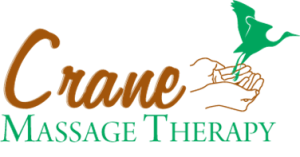In the last post, we explored the whys and wherefores of an increasingly popular trend: pet massage. In this one, we will focus on specific ways you can help your dog or other animal deal with sore muscles, arthritis and similar conditions.
Regular massage, like grooming, can be a great way to pay attention to your pet’s needs. Massage has been proven in studies to lower blood pressure and stress levels for both the giver and recipient, making it an ideal way to spend time with your pet. It also may help them prevent developing issues like stiffness as they age. Pet massage therapists have shared many ideas on how to administer self-care to your pet; we have consolidated the most common techniques below.
To develop a regular massage routine, use the flat portion of your palm to run over your pet’s body. Spend the first few days getting to know their various layers of fat, muscle and bone, so you can become aware of changes over time, as well as of any tight areas. Changes to look for include swelling or tightness; pain or sensitivity; or temperature changes that can indicate inflammation. This information can prove to be useful to others who work with your pet, like their vet or groomer. This “mini massage” can be performed daily if desired.
On occasions like the Fourth of July, or when the gardeners make a racket at an unexpected time, or when a nail trim is imminent, an anxious pet can benefit from massage techniques – consider it an upgraded form of standard petting. Using the palm of your hand, start at the head or neck area, then move back along the sides of the spine (never directly on it) and down the tail or toward the tail area, using pressure. If the pet seems to be enjoying itself, try applying more pressure to see they like it. Perform several sweeps on each side of the spine. End the “massage session” by placing one hand at the base of your pet’s head and the other on the top of the pelvis area (above the back of the hips). Some veterinarians say that these trigger points aid the pet’s body in relaxing.
For older pets in particular, arthritis and stiffness can be especially painful following exertion. To help pets with sore joints, try lightly rubbing the area near the joint, then use a very gentle compression using your hand on the area. Press and release gently in order to increase blood flow to the area and aid the tension of the muscles and tendons. Remember: for more severe issues, a veterinarian is essential; self-care should never substitute for a professional diagnosis and treatment.
For especially athletic dogs, a pre-“workout” massage can help their muscles warm up before running, hiking or a frenetic fetch session. Begin with the relaxation technique above, then continue with a brisk rub in their muscle areas using the heel of your hand, in a method similar to kneading dough. Finish with another petting session.
C.B.Y.

excellent article. this is a commonly neglected topic that should get more attention. we spend so much on our pets, and we do everything but a massage. the trend is clearly reversing, and articles like this one do a very good job of bringing out the much needed awareness.